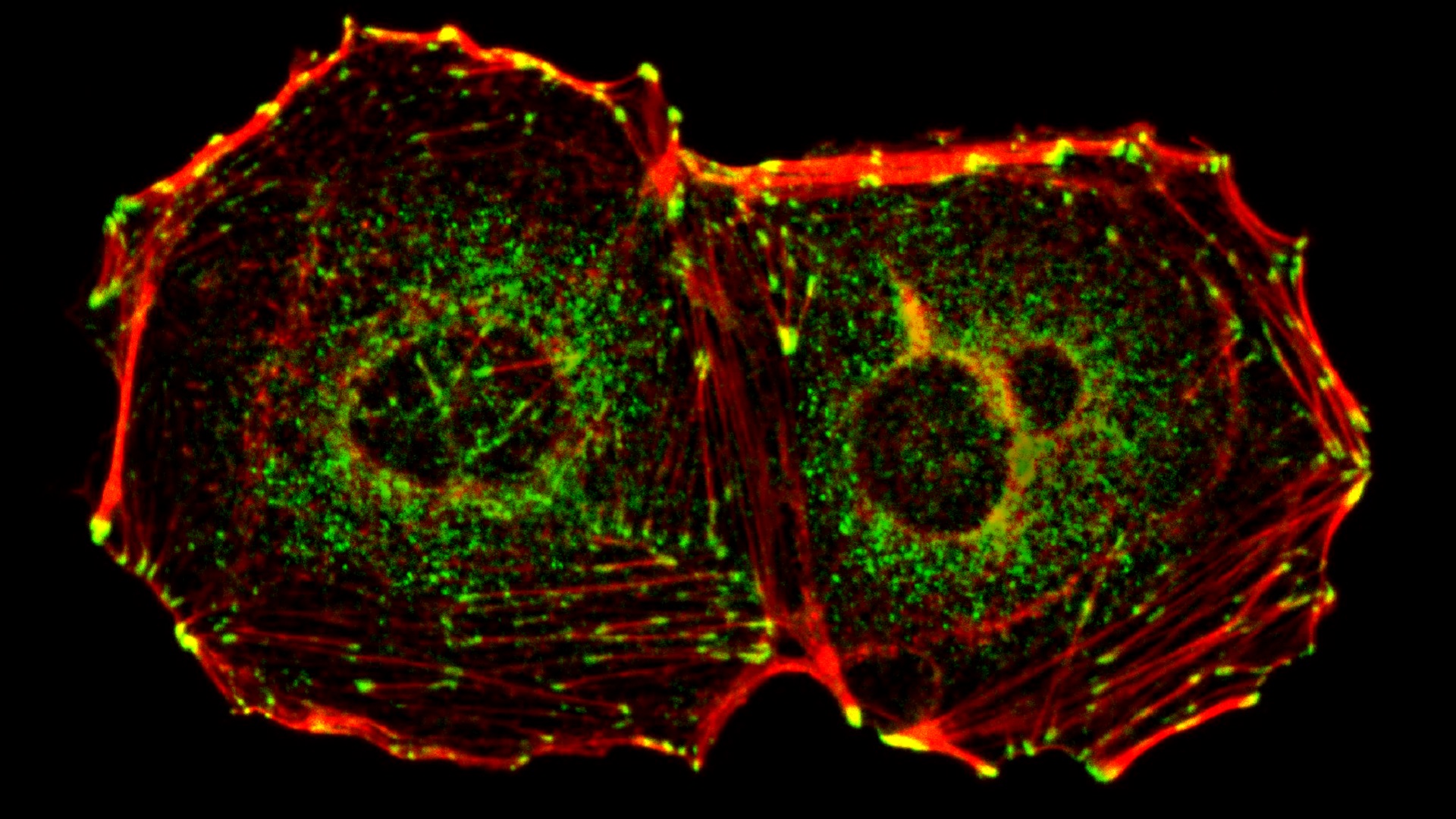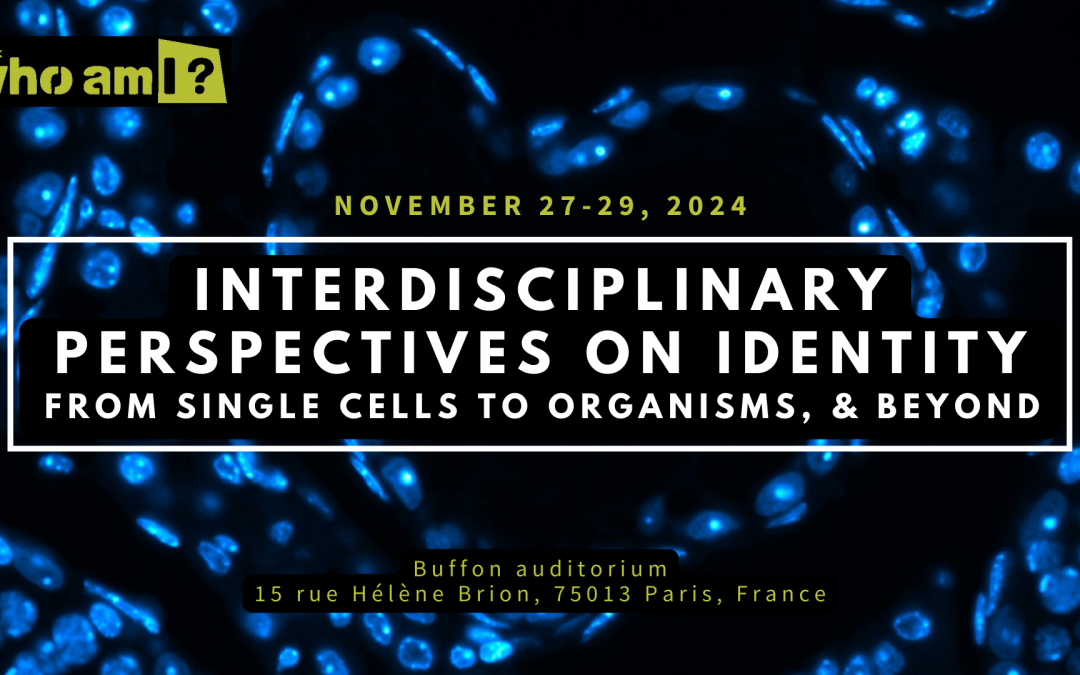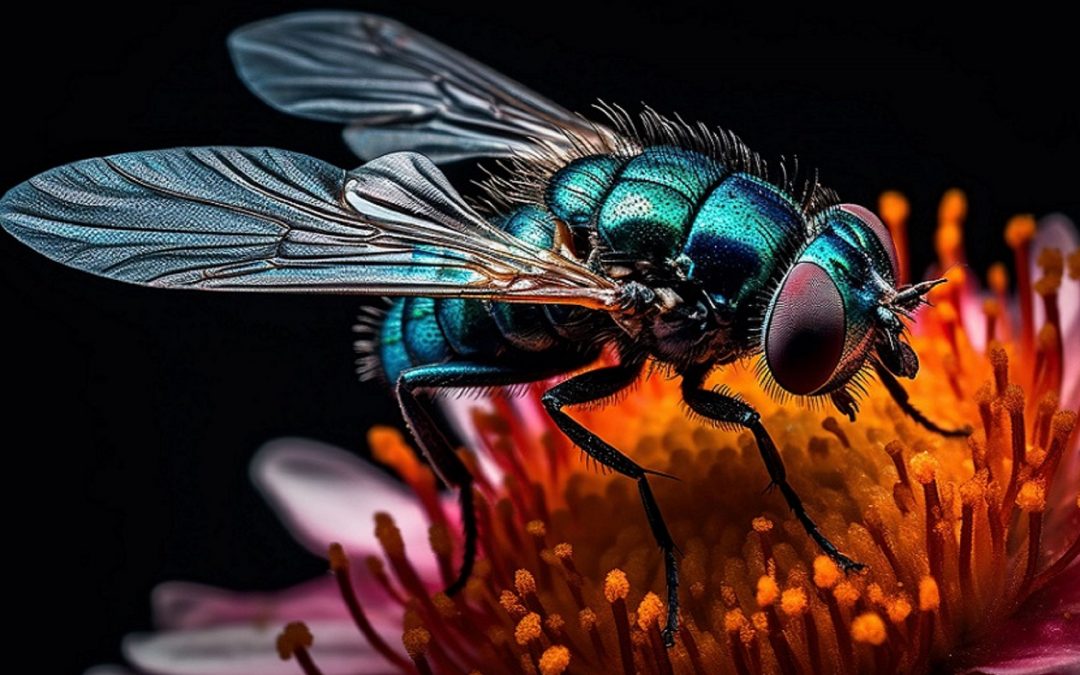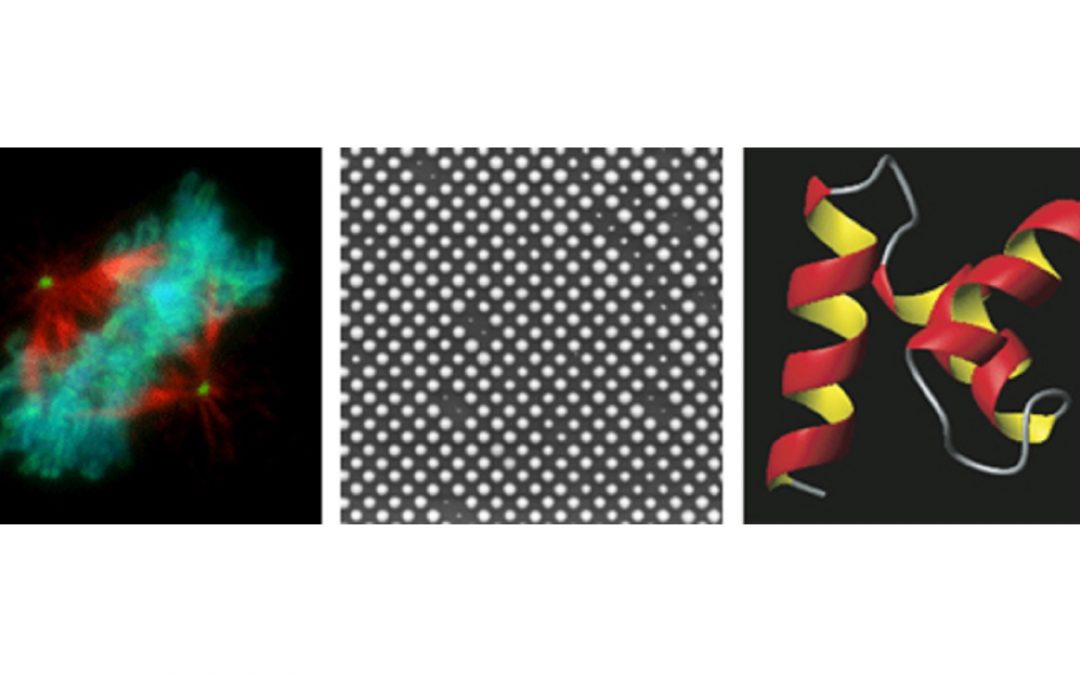Transmission of identity across generations
Transmission of identity across generations requires the maintenance and proper transmission of genetic information during cell division. To this end, the genome must be entirely replicated, and the resulting DNA molecules must be faithfully distributed to the daughter cells so that each one receives a complete copy of the genome. Here, we will use complementary approaches in various model organisms to decipher how the genetic information is transmitted during cell division. In addition, we will question the concept of transmission: how should we see the transmission between cell and daughter cell? Are the mechanisms of cell division required to be part of the general mechanisms of inheritance? Or are there several concepts of inheritance, depending on whether one tracks cells or organisms?

Cell Kissing
Epithelial (MDCK) cell doublet, dual-stained for actin in red and focal-adhesion in green.
© Gautham Hari Narayana SANKARA NARAYANA, Institut Jacques Monod
All living organisms are built from a large number of cells and a wide variety of cell types with specific cellular identities. For instance, an adult human is roughly made up of 10^13 cells and around 200 different cell types including the gametes (egg and sperm) that are essential for sexual reproduction. A specialized cell division program, called meiosis, produces haploid gametes that restore diploidy to a zygote upon fertilization. Mitotic cell divisions increase cell number by distributing equally and faithfully the replicated genome into daughter cells. Defects in the regulation of this fundamental process can have drastic consequences, leading to cell death or genome instability, which is a hallmark of cancers.
Over the past decades, tremendous progress has been made toward the identification of the factors and molecular machines ensuring that the genome is faithfully replicated and transmitted to the daughter cells during mitotic cell division. Likewise, the machinery and mechanisms allowing the proper segregation of the chromosomes during mitosis are emerging. Much less is known, however, on the mechanisms driving chromosome segregation during female meiosis, which occurs in absence of centrosomes. Furthermore, several mechanisms and processes have been extensively studied in detail, but often not analyzed in relation to each other. For instance, although transcription and DNA replication have been extensively studied separately, how the transcription and replication machinery interact to ensure genome integrity during cell division is much less understood. Likewise, the influence of epigenetic marks on the DNA replication program is still poorly understood.
At the cellular level, macromolecular structures like the nuclear pore complexes (NPC), which regulate nucleo-cytoplasmic transport, genome organization, and transcription during interphase have to be dismantled during mitosis and orderly reassembled after mitosis. How these large macromolecular complexes are dismantled and reassembled during cell division is still poorly understood.
The scientific community of the Labex is in a unique position to bridge these gaps of knowledge because our community gathers experts in nuclear pore complexes, transcription, DNA replication, and DNA repair, epigenetics, cell polarity, meiotic, and mitotic cell divisions. Taking advantage of the existing network of collaboration, initiated by the Labex, we apply a broad range of experimental models and integrated approaches to study processes at interfaces between different disciplines to unravel novel concepts. The focus is the integration of process and quality control mechanisms and how this orchestration is critical for the establishment and transmission of cellular identities. More specifically, we study the influence of epigenetic marks on the DNA replication program and the coupling between transcription and DNA replication, DNA repair but also meiosis and mitosis. In particular, we explore mitotic cell division in a developmental context and investigate how crosstalks between mitosis, cell fate, and cell polarity influence cell identity.
Overall, we investigate the transmission of identity across generations at multiple levels by deciphering how the fidelity of DNA replication and the DNA repair machinery ensure the transmission of DNA molecules with no mutations across generations but also how the timing of DNA replication, modulated by internal or external cues (epigenetic marks), can influence the production of cell types with different identities.
In addition, the notion of transmission raises philosophical questions concerning the constancy of identity across generations. Evolutionary biology provided statistical tools to measure this constancy and to assess the respective contributions of environments and parents in a population. Throughout the history of biology, the notion of transmission developed into the statistical notion of heritability, and into the concept of gene, which gradually materialized into DNA. However recent advances showed that there are more than genes to inheritance. So how exactly should the concepts of gene, heritability, heredity, and transmission be understood? This conceptual analysis requires a thorough historical understanding of these concepts, including the way they have been experimentally employed. We will question the concept of transmission: how should we see the transmission between cell and daughter cell? Are the mechanisms of cell division required to be part of the general mechanisms of inheritance? Or are there several concepts of inheritance, depending on whether one tracks cells or organisms? This question becomes crucial in debates about the role and importance of epigenetics in evolutionary biology or sociology. The Labex considers the philosophical hypothesis that distinctions between inheritance systems (i.e. genetics, epigenetics) are intrinsically related to timescale differences in recurring environmental factors.
À lire aussi

Closing Conference 2024 – Interdisciplinary perspectives on identity
The Labex Who Am I? invites you to its closing conference, “Interdisciplinary Perspectives on Identity: from Single Cells to Organism and Beyond”, which will take place on November 27-29 in Paris. The Labex Who Am I? final conference will take place on November 27, 28...

Pint of Science festival 2024
Once again this year, the Labex Who Am I? is partnering with the Faculty of Sciences of the Université Paris Cité, the Genetics and Epigenetics New Education (G.E.N.E.) Graduate School, and the Major Research and Innovation Domain BioConvergence for Health...

Visiting Professors programme: Matthias Peter
As part of its Visiting Professors programme, the Labex Who Am I? is delighted to welcome professor Matthias Peter, professor of Biochemistry and group leader at ETH Zurich, Switzerland. © Peter group, ETH Zurich Matthias Peter...

Rhythms and resonances: coming into contact with otherness
The Labex Who Am I? co-funds the “Rhythms and resonances: coming into contact with otherness” workshop. © Gerd Altmann from Pixabay Interdisciplinary doctoral workshopThe “Rhythms and resonances: coming into contact with otherness”...
